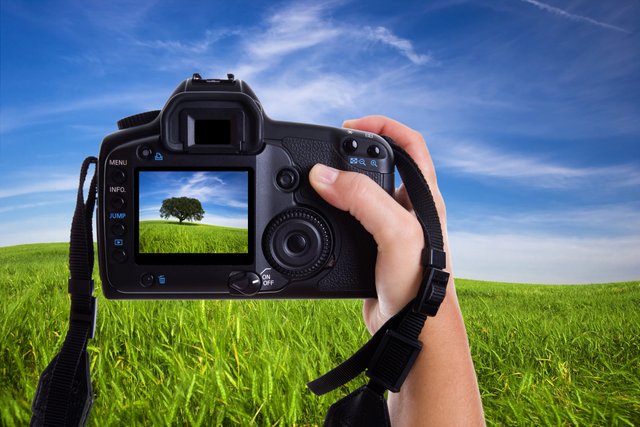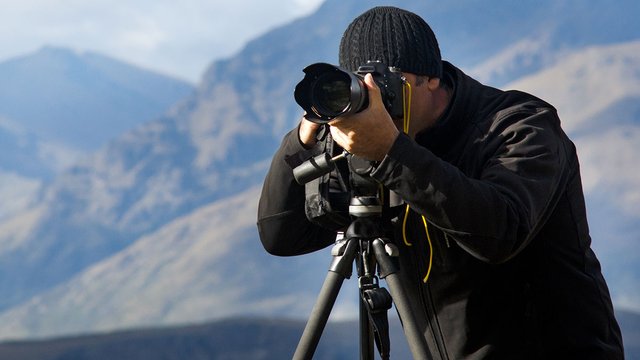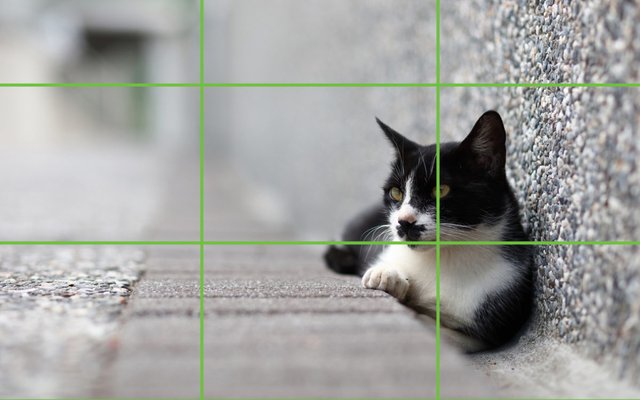Photography 101: Easy Ways To Improve Your Photography
Hello guys, over the previous weekends, Photography 101 was hosted on my other account, @wdoutjah. Starting today, all my Travel and Photography series will be posted on this account.
To formally start and continue this week's Photography 101, let us all get back to the basics. I bet a lot of us must've failed to do this stuff.

When you walk into a camera store and plops down a small fortune for the most up-to-date digital SLR camera with all the bells and whistles. The sales person would always says, "This is a great camera, you'll be very happy with it….it can do everything!".
Smiling, you walk out of the camera store with your shiny new toy. You go home, play and tinker with the camera for a couple of weeks, put in the closet and then doesn't bother anymore to play with it again.
Sound familiar?
This is a common occurrence for most aspiring photographers because after you play with your camera for a few days, you really don’t know what to do next or you have no idea how to improve.
Here are some basic steps that you can take which will quickly improve your photography skills.
Read Up
There are two very important items that you should read immediately to get you started in the right direction.
The first is the camera manual. Although this sounds incredibly boring but it is imperative that the new camera owner must read the manual. There are so many features crammed into today’s digital SLR cameras that there is no way to truly know what the camera is capable of unless the manual is read cover to cover. Read each page and whatever the manual references, find it on the camera. It it references a button, push it. If it is a switch then flip it.
The second thing that you should consider is purchasing subscriptions to several photography magazines. Though not really necessary but if you really want to step up your game, this would be a big help. One advantage of this is you get first hand information.
Seeing other photographers’ work and reading what industry insiders have to say on a regular basis is very helpful in the journey to develop better photographic skills.
Know Your Subject
Although this may seem obvious, the more you know your subject, the better the images will be. For example, in nature/animal photography it is a good idea to know the habits of the subject animal and how they move. Mountain lions pace back and forth, but a bear may actually rise up on her hind legs for various reasons. Raccoons move quickly while other animals will move more slowly.
Similarly, It is useful to know that the best time for landscape photography is early morning and the late evening. In sports, every sport has different plays and different moves.
Knowing the sport helps you anticipate what the player will do next. Often adults are shy when a camera is present and kids never sit still. Know what can bring an adult out of their shell and that a zoom lens works great for kids on the move. Whatever the subject, the more you know your subjects the better prepared you will be to get the best shot.
Get A Tripod
Using a tripod is the only way to truly ensure tack sharp images, period. No one can hand hold at 1/25 of a second, so just don’t try it. Yes, tripods can be heavy and bulky and just a flat out pain at times. But they truly are the photographer’s best friend.
When buying a tripod, you have to choose between weight and sturdiness. The heavier the tripod the more sturdy and durable it is. The lighter the tripod the more likely you can carry it but if your camera is bulky, there might a slight issue on the sturdiness.
Some of the best tripods have carbon fiber legs. The material is fairly light and quite sturdy. When purchasing a tripod, always try to purchase the legs and the head separately to get the best combination of features.
Composition
Knowing and utilizing the basic rules of composition will certainly improve your photographs more than any other.
First and foremost, the Rule of Thirds.
Using this rule is achieved by mentally dividing the image into thirds both horizontally and vertically. The points where the lines intersect are called power points. Placing the subject at one of these points and placing other sections of the photo along the dividing lines will draw the viewer into the photo and will cause the image to be a much stronger image.
Another composition rule is to fill the frame.
The first mistake you make when you first purchases a digital SLR camera is that you tend to capture your subject far too small. In other words, the subject and the important parts of the image don’t fill the frame. Don’t ever commit this mistake. Use the zoom on the lens to get closer to the subject or even use the good old 'foot zoom' – ie. get up and physically move closer to the subject.
Filters
Photoshop has practically made the use of filters on the lens obsolete. There are, however, two filters that are absolutely necessary for an outdoor photographer. The first of these filters is the Polarizer.
A polarizer deepens blue skies, cuts glare and reflections from surfaces such as water and leaves and even helps saturate some colors. The effects of a polarizer cannot truly be duplicated in Photoshop.
The second filter to have in the bag is the circular solid neutral density filter.
This filter’s sole existence is to block light from the camera. This filter would be used when the photographer wants to creatively use long shutter speeds and there is too much light in the scene.
Blocking light with the filter will allow the camera to provide long shutters without over-exposing the image.
That's it for now guys and stay tuned for another episode of our Photography 101. If you wish to check on our previous releases, see the list below.
- Photography 101: The Best Photoshop For Your Photo Editing Needs
- Photography 101: Photo Journaling With Your Smartphone
- Photography 101: Photography with a Focus
- Photography 101: Improve Your Landscape Photography
- Photography 101: Night Photography
- Photography 101: How to Take Better Photographs
- Photography 101: Traveling With a Camera
- Mobile Photography 101: 4 Essentials to Capture Perfect Portrait Shots
- Photography 101: Photography Ideas For Your Next Rockstar Shots
- Photography 101: Common Mistakes To Avoid
- Photography 101: High Dynamic Range (HDR)

Increasing the Visibility of Original and Engaging Content
Like @Curie? Support by voting Curie as Witness! https://steemit.com/~witnesses
Join us in Discord https://discord.gg/G6RPUMu





You have been upvoted by the @sndbox-alpha! Our curation team is currently formed by @jeffbernst, @bitrocker2020, @jrswab & @teachblogger . We are seeking posts of the highest quality and we deem your endeavour as one of them. If you want to get to know more, feel free to check our blog.
Very well put together post! Saw your plug on the Discord channel and you have a new follower in me!